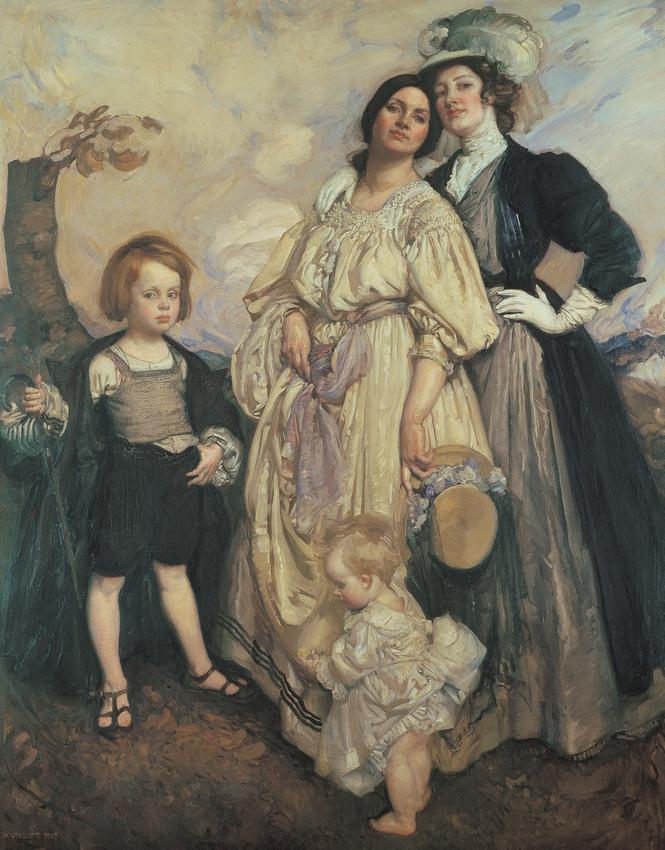We acknowledge the Traditional Owners of the land on which the Queensland Art Gallery | Gallery of Modern Art stands and recognise the creative contribution First Australians make to the art and culture of this country.

George W. Lambert / Australia/England 1873–1930 / Portrait group (The mother) 1907 / Oil on canvas / Purchased with the assistance of S.H. Ervin 1965 / Collection: Queensland Art Gallery | Gallery of Modern Art
George W. LambertPortrait group (The mother) 1907
Not Currently on Display
Portrait group (The mother) 1907 is one of several portrait groups George W. Lambert painted of his wife, Amy, and their two children. It also features their family friend and colleague, Australian artist Thea Proctor.
In this portrait, Amy is subtly defined as the fulfilled mother by her casual dress and maternal pose, with baby Constant clutching her skirts, in contrast with Proctor, the professional woman. Lambert acknowledged his debt to past masters such as Spanish painter Diego Rodríguez de Silva y Velasquez (1599–1660) in his description of the work:
‘The happiest passage is the sturdy little chap on the left, who stands, a faint echo of a little Infante by Velasquez – with his legs firmly planted on the ground, looking straight out of the canvas with something like roguish defiance.’
George Washington Thomas Lambert was born in 1873 in St Petersburg, Russia. The family moved to England in 1881, where Lambert went to school, before they finally immigrated to New South Wales in 1887.
In 1899 Lambert won the Wynne Prize for landscape with one of his most important paintings, Across the black soil plains (Art Gallery of New South Wales). Soon afterwards he left Australia for Europe with his wife, enrolling at Académie Colarossi in Paris along with fellow Australian artist Hugh Ramsay. As a specialist in portraiture Lambert was able to make an income through commissions from subjects as important as King Edward VII; however, many of his portraits were uncommissioned paintings and sketches of his own family and friends.
During World War One he became a very successful and prolific war artist with the Australian Light Horse Brigade in Palestine from 1917 until 1920. In 1922 he was elected an associate of the Royal Academy in London. Released from his duties as a war artist, Lambert once again specialised in portraiture. He continued to exhibit with the Society of Artists, and from 1926 with the Contemporary Group, which he formed with Thea Proctor.
Discussion Questions
Look closely at the dresses and accessories worn by the two women in the painting. Which one is the professional artist Thea Proctor, and which one is the mother of the children? Give reasons for your answer.
Classroom Activities
Research and gather imagery of Australian women and children from the early 1900s. Select three images to display with Lambert’s painting. How would viewers of your combination compare and contrast the four images?